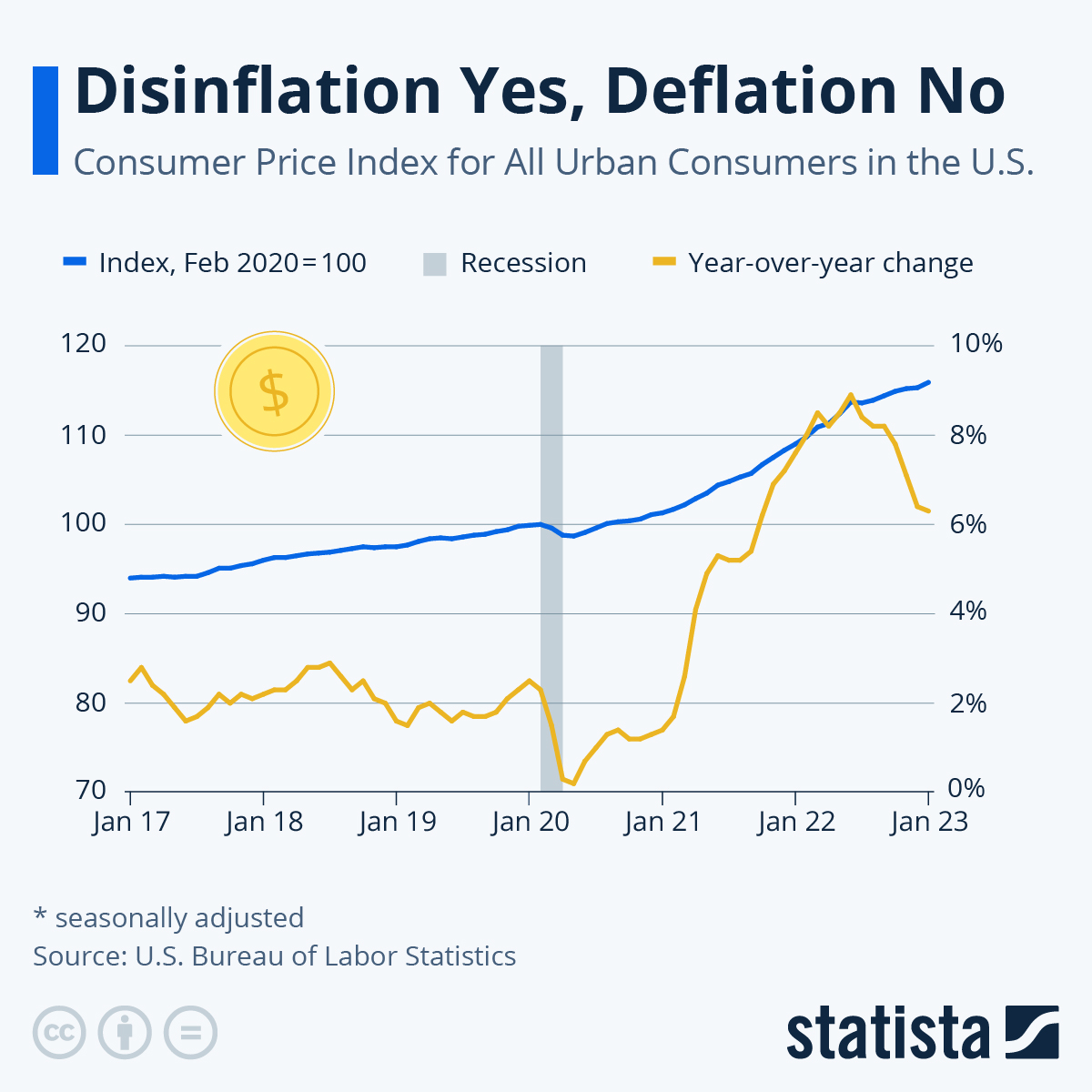
Disinflation vs Deflation
Deflation is a decrease in the general price level, while Disinflation is a slowdown in the rate of inflation. Key Differences Deflation and Disinflation, while both related to price movements, depict different economic phenomena. Deflation refers to the decline in the overall level of prices in an economy.
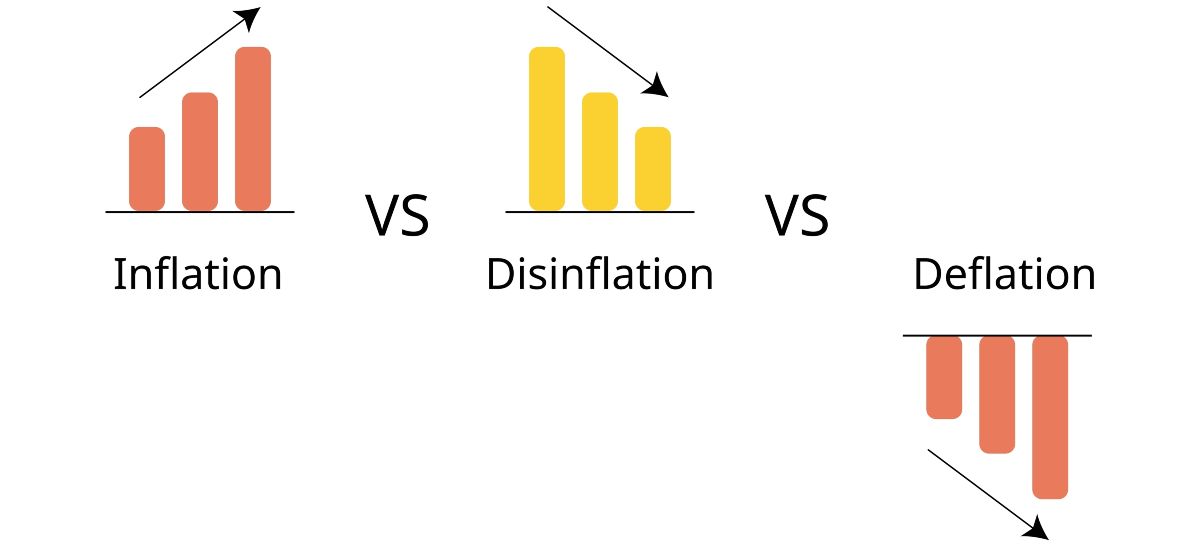
Disinflation vs deflation what's the difference? CurrencyTransfer
Deflation is effectively the opposite of inflation and is marked by a period of falling prices. Disinflation, on the other hand, measures the speed at which inflation rises or falls.
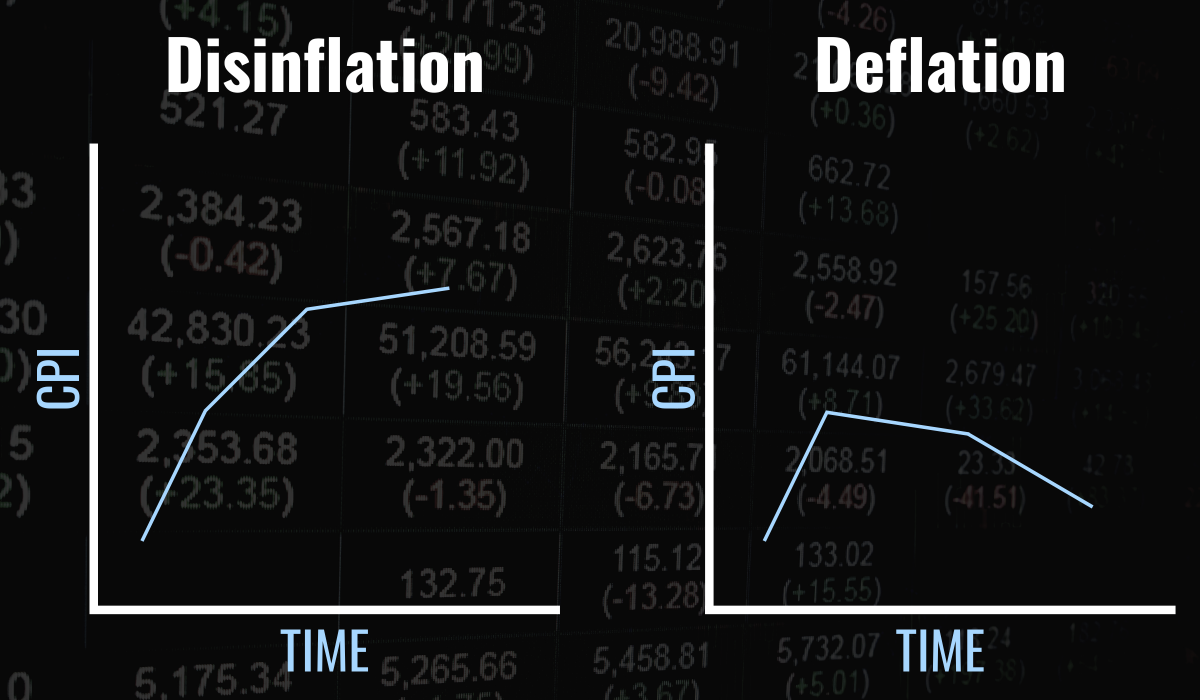
What Is Disinflation? Definition, Example & Impact TheStreet
According to the Federal Reserve Bank of San Francisco's deflation definition, it "represents the opposite of inflation, which is defined as an increase in the overall price level over a period of time". On the other hand, disinflation means a period when the inflation rate is positive, but declining over a period of time.
Inflation, deflation and disinflation What's the difference? TrendRadars
Difference between Deflation vs Disinflation The general price level of goods and services in the economy may show a positive trend, a downward trend, or a slowdown in the positive trend. Based on these scenarios, concepts such as inflation, deflation, and disinflation come into the picture.

Difference between Deflation & Disinflationअपस्फीतिDEFINITION, CAUSES, EFFECTS (Easily
Let's start with base definitions. Inflation is a sustained increase in the price level of goods and services. Disinflation is a decrease in the rate of inflation. Deflation is a sustained decrease in the price level of goods and services. Inflation, disinflation and deflation refer to increasing or decreasing average price levels of the economy.
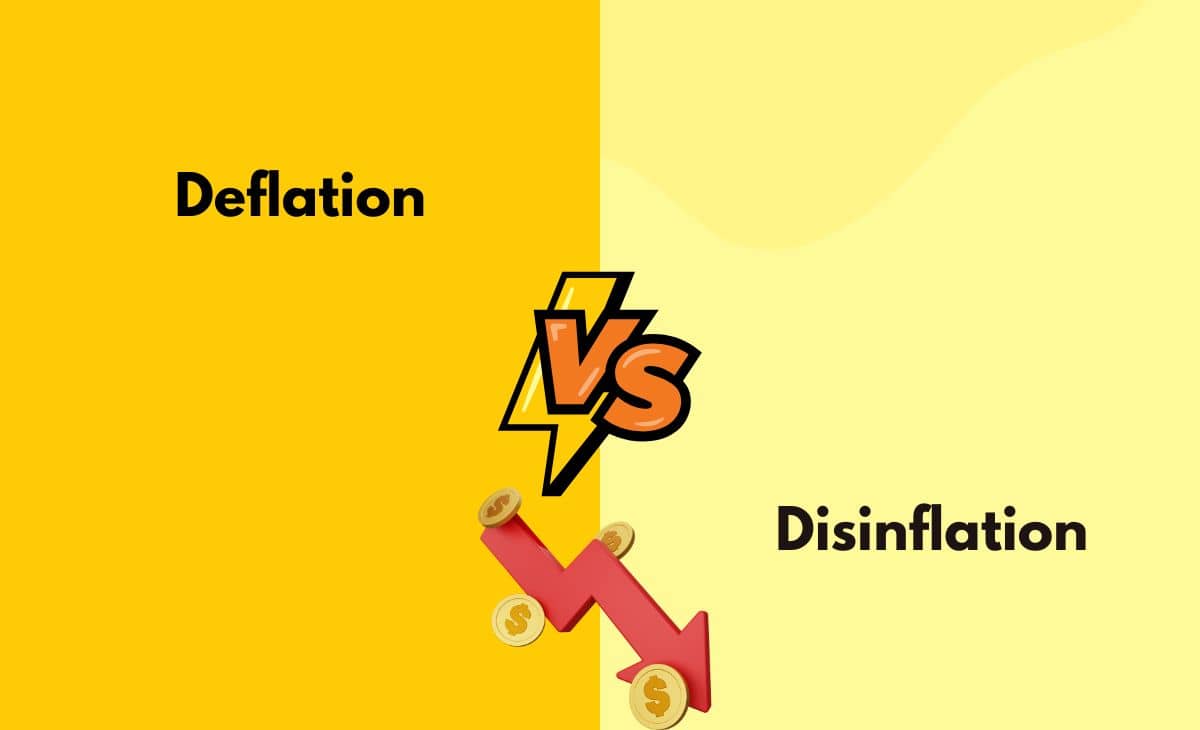
Deflation vs Disinflation What's the Difference (With Table)
Deflation refers to the general decline in the price level in the market caused by factors of demand and supply. In contrast, disinflation refers to a temporary slowdown in the degree of inflation. Deflation is the exact opposite of inflation and is controlled by the market forces.

What is the difference between deflation and disinflation ? Inflation Deflation Disinflation
The MIT Dictionary of Modern Economics defines deflation as "A sustained fall in the general price level." 1 Deflation represents the opposite of inflation, which is defined as an increase in the overall price level over a period of time. In contrast, disinflation, represents a period when the inflation rate is positive, but declining over time.
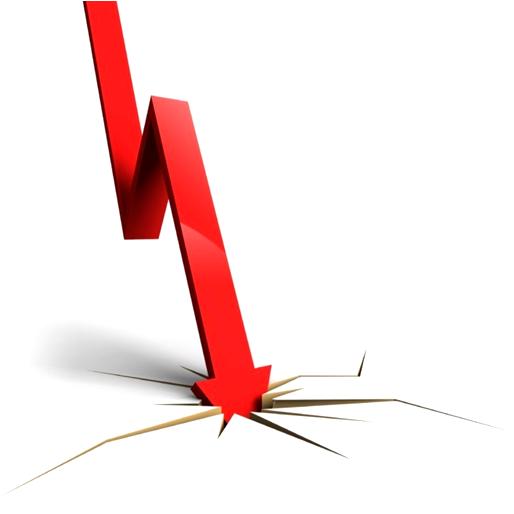
Difference between Deflation and Disinflation
Disinflation is when we see a reduction in, or a slowing of, the inflation rate. In other words, the price level is increasing but at a decreasing rate. The most famous period of disinflation in US history, regularly referred to as Volcker Disinflation named after the Federal Reserve Chairman during this time, occurred in the early 1980s.

Difference Between Deflation And Disinflation
Deflation and disinflation Disinflation is a decrease in the rate of inflation, while deflation is a decrease in the general price level. In other words, disinflation is a slowdown in the rate at which prices are rising, while deflation is a decrease in prices. Disinflation can be caused by a number of factors, including:

Deflation vs Disinflation 10 Most Valuable Differences You Should Know
During Jerome Powell's press conference on Wednesday, the Federal Reserve Chairman used terms like inflation, deflation and disinflation, but what do those terms actually mean for you and your.

What is the Difference Between Deflation and Disinflation?
Deflation means prices are falling and the inflation rate is in the negative, while disinflation means a slowdown in the rate of inflation while still remaining in the positive. Disinflation occurs more commonly than deflation.
Inflation, deflation and disinflation What's the difference?
Deflation occurs when the inflation rate falls below zero, and prices generally decline throughout an economy. Disinflation is what happens when the inflation rate falls but remains positive..

Top Ten Impacts of Recession Dejiabimbola
Deflation is when there are too many goods and not enough money, leading to a drop in prices Disinflation is when inflation begins to cool, either by market forces or government action (like interest rates hikes) While disinflation isn't something to worry about, in and of itself, it could lead to deflation What is inflation?

Deflation vs Disinflation Top 11 Best Differences (infographics)
Explaining the difference between Disinflation and Deflation. Fears of price deflation now seem a distant memory with CPI inflation in the UK economy climbing to 11% during 2022. Students often confuse disinflation with deflation, so we have produced a quick video primer on this and included some charts to show what has been happening to.

Premium Vector Difference of inflation, deflation and disinflation
Deflation takes places when the inflation rate is below 0%, or say negative inflation rate. Conversely, disinflation is the deceleration of the rate of inflation. Take a read of this article carefully to know the important differences between deflation and disinflation. Content: Deflation Vs Disinflation Comparison Chart Definition Key Differences
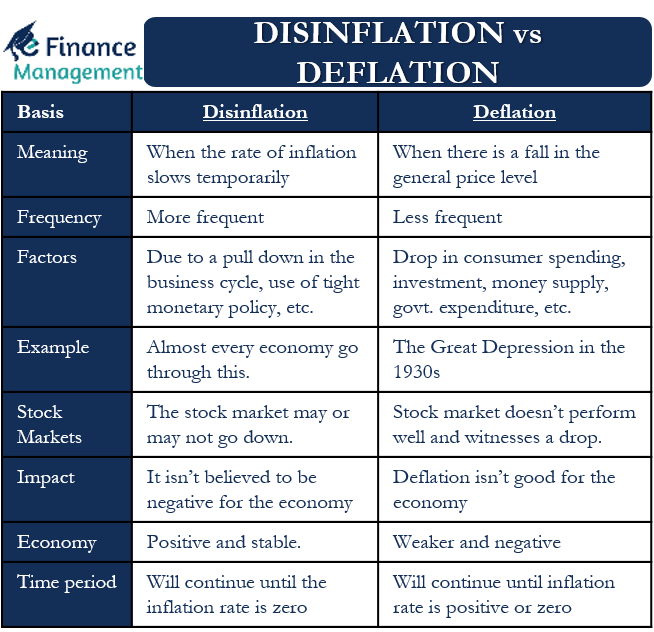
Deflation and Disinflation Difference
Deflation, by contrast, is when average prices are falling outright. The inflation rate flips negative. Some consumer categories — like used vehicles and gasoline — have deflated over the past.